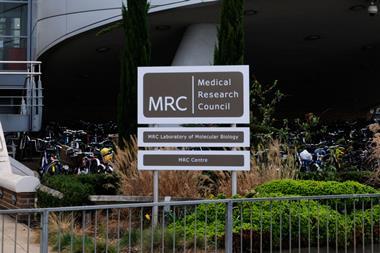Funders need to increase stipends for PhD students
The minimum stipend for a UKRI-funded PhD student is currently £15,609. This will increase by 2.9% for the upcoming academic year, to £16,062. With the UK’s annual inflation rate currently at 9.4% and predicted to continue to rise, many graduate students face difficulties covering their costs of living. As of 20 July, nearly 9500 of them have signed an open letter to UKRI asking for next year’s stipend levels to be revised in line with inflation. UKRI have now responded to the letter, but have not yet committed to any funding increases.
But the Aries Doctoral Training Partnership (DTP) at the University of East Anglia, UK, had another suggestion: instead of increasing stipends, why don’t PhD students get a second job? Suggestions include taking part in clinical trials, dog walking and fruit picking. In the wake of widespread criticism, the DTP has since apologised.
Many PhD students already have some form of secondary income. Mine was lab demonstrating. I only did a few sessions a year, yet even that caused issues. After a week where I’d spent about 10 hours teaching, my supervisor had a serious talk with me because he felt I hadn’t been in the lab enough recently. And yet gaining teaching experience was supposed to be an important part of my PhD training – I wasn’t doing it only for the money. (Incidentally, I think my PhD stipend was around £15,000 – the minimum for my first year in 2010 was £13,590. That 12 years later many PhD students earn barely more than I did is horrifying.)
Without action, there’ll be few people who can afford an academic career
One of the major problems of academic culture is the expectation that you must be fully dedicated to your research round the clock. And many graduate students are: a 2019 Nature survey reported that 76% worked more than 40 hours a week on their PhD; 24% worked more than 60 hours. They already have a more than full-time job – they don’t have time for a second one. Indeed, many PhD contracts in the UK limit how much time you can spend on external work, often to six or 10 hours a week. And visa restrictions prevent international students from many types of employment.
The solution to the cost of living crisis is not to force graduate students to work more. Funders and research institutions need to increase the financial support they provide. Yes, their budgets are also being hit by inflation. But this is not about kindness – it’s an important investment. Without action, there’ll be few people who can afford an academic career. Evidence suggests that those who are priced out will disproportionately belong to groups that are already underrepresented in science, leaving the academic workforce less diverse – and so less innovative. Underpaying PhD students doesn’t only leave them poor, it makes the future of science incalculably poorer as well.
A closer look at the data
Having written the above, I wondered just how bad things had got for PhD students in the UK over recent years. How have minimum stipend levels compared with the take-home pay (after income tax and national insurance have been deducted) of someone working full-time on minimum wage? Open data sources allowed me to do some digging. Past recommended minimum PhD stipend levels for the UK are available online, as is the history of the minimum wage since it was introduced in 1999 and the corresponding thresholds and rates for income tax and national insurance (NI).
I have assumed a full-time working week to contain 37.5 working hours – fairly standard in many UK employment contracts, although few PhD students are working as little as this. I’ve also taken minimum wage to be the maximum available rate. The age thresholds at which different wages become the legal minimum have varied over the years – currently, to be entitled to the national living wage, you have to be 23 or over, but in previous years you’ve had to be as old as 25 to receive the full minimum wage. For simplicity, I’ve assumed my minimum wage employee has always been over 25.
So how have minimum recommended PhD stipends in the UK changed since 1999?
The sharp increase in stipend seen between 2002–2005 was in response to SET for success, a government review led by Gareth Roberts in 2002, which investigated the supply of skilled scientists and engineers in the UK. There were concerns about a decline in the number of PhDs awarded in some scientific disciplines, as well as concerns that ‘the quality of postgraduate student intake and output is declining’.
One conclusion of the report was that PhD study was financially unattractive, leaving many of the most promising candidates to take up jobs in industry straight after completing their undergraduate degree, lured by the higher starting salaries available. As shown in the chart above, the Roberts review was conducted at a time when minimum PhD stipends paid about the same as full-time minimum wage working. Stipends returned to the equivalent of minimum wage in 2018. History has repeated itself, except this time there doesn’t appear to be much prospect of a comprehensive stipend review. Incidentally, Roberts suggested increasing minimum stipends to £10,000 a year; they actually increased to £12,000.
Now let’s look at those stipend and salary levels after they’ve been adjusted for inflation – in this case, using the consumer price index – to give an indication of how stipends and minimum wage has tracked changes in the cost of living.
Taking inflation into account, the effective value of a PhD stipend has decreased ever since the boost in 2005. Over the same period, the value of the minimum wage steadily tracked upwards until 2020, when the cost of living crisis hit the UK. The small recovery in value in July 2022 reflects the increase in NI payment threshold introduced then. The final point on the PhD stipend plot represents UKRI’s current proposed minimum for the 2022/23 academic year. I’ve normalised it using the current inflation rate of 9.4%; however, this rate is forecast to rise until the end of the year, meaning PhD students are likely to be even worse off than shown.
What next?
The above analysis is just a starting point, and opens up several questions I’d like to explore further. How have other scientific salaries changed over the same period? What is the situation like outside the UK? Regardless of the answers, it’s clear that PhD students in the UK are struggling financially on a level not seen for nearly 20 years. Something needs to be done – and done quickly – to increase the support they receive.
Editor’s note: This article was corrected at 17.10 BST on 25 July 2022 to correct the minimum stipend levels applied in 2003 and 2004. This means that the peak year to be a PhD student, when stipends are adjusted for inflation, was 2005, not 2003 as previously stated













No comments yet